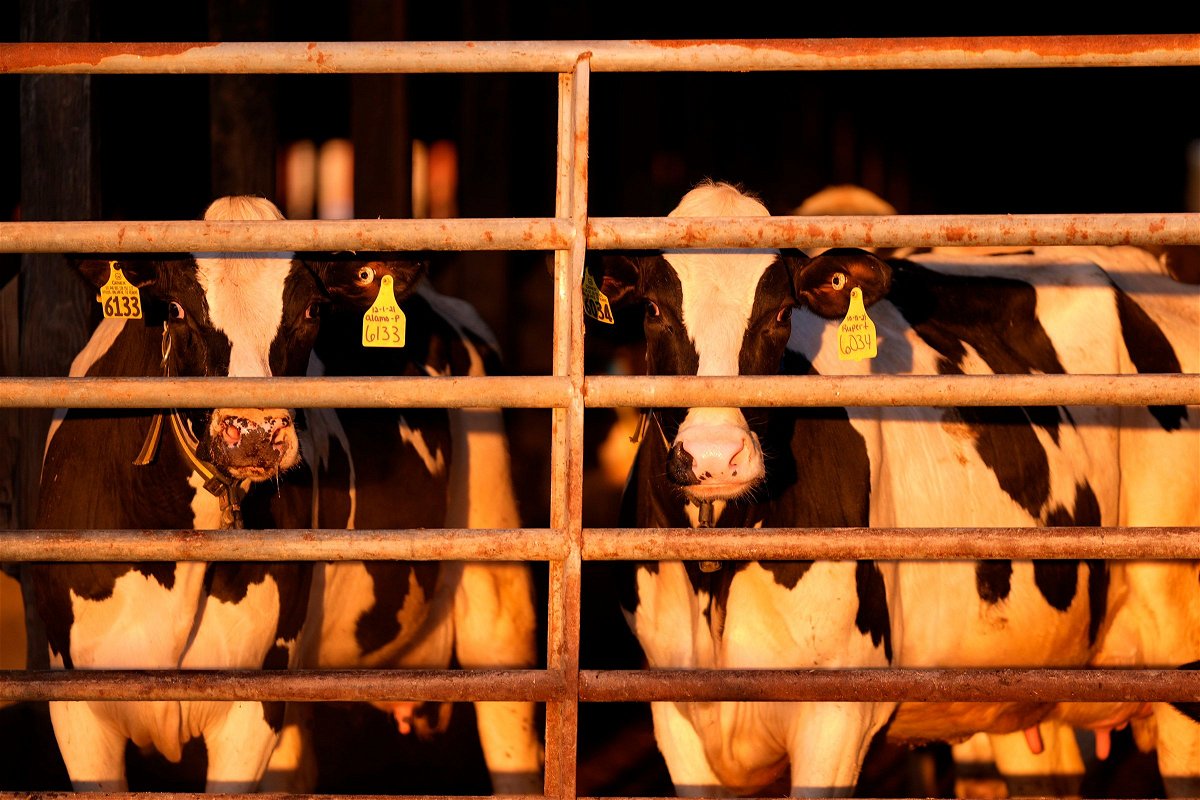First national look at H5N1 bird flu in wastewater suggests limited spread in US

(CNN) — Results from recent wastewater testing across the US suggests that H5N1 bird flu may not be as widespread as first feared.
The data, released Monday by the nonprofit WastewaterSCAN network, showed detections of the H5 protein portion of the flu virus in sewage from 14 water treatment plants in five states, mostly in Texas and Michigan, suggesting that an ongoing outbreak in dairy cattle may largely be confined to states that have already been identified as having affected herds.
“We’re not detecting H5 everywhere. We’re only detecting it in certain locations,” said Dr. Alexandria Boehm, professor of civil and environmental engineering at Stanford University and program director for WastewaterSCAN.
The test for H5 was run in 190 monitoring sites across the US over the past two weeks. Nine states are not enrolled in the WastewaterSCAN network and so are not included in the surveillance: South Carolina, Missouri, Oklahoma, New Mexico, Arizona, Wyoming, Montana, North Dakota and Oregon.
There were detections in two states where no affected dairy herds have been identified: Iowa and Minnesota. However, both states have seen recent outbreaks of H5N1 in poultry.
Boehm explained that the researchers aren’t sure exactly what the sources of H5 in wastewater may be. It could be from permitted discharges of unused or leftover raw milk to wastewater treatment plants where the samples are collected.
“In the case of Amarillo in Texas, for example, they had a dairy processing plant that was making processed dairy products, and their waste stream discharges into the wastewater treatment plant because milk, raw milk from the local area, was coming into that plant with H5N1,” Boehm said.
That may not be the source in all areas, however. There’s a chance the H5 detections might also be due to human infections or from less-likely sources such as infected wild birds that might contaminate wastewater or stormwater runoff that picks up H5N1 virus on its way into sewers, perhaps from bird droppings, Boehm said.
People shouldn’t be unduly alarmed if H5 appears in a nearby sewer system, Boehm said.
“The way that we’re thinking about it is that wastewater is providing an additional tool to the nation” to keep eyes on the virus amid the outbreak, Boehm said.
Experts say such tools are needed because testing of cattle has been limited, and the farm workers who are most at risk of catching the virus from infected cattle often live on minimal incomes and might not want to be tested if it means they could miss days of work without pay.
As of Tuesday, 81 dairy herds with infected cows have been identified across nine states. States reporting the highest numbers of affected herds are Michigan, Idaho and Texas, according to the US Department of Agriculture.
The USDA issued an order in late April requiring dairy cattle to test negative for H5N1 before they can be transported across state lines, but many farmers have been reluctant to let government officials into their farms to conduct further surveillance for the virus.
Dr. Eric Deeble, deputy assistant secretary for the USDA, said last week that more than 17,000 tests for H5N1 flu had been run on cattle, with the caveat that some of the samples were pooled, so one test may represent more than one cow.
But when asked to estimate whether one thousand, tens of thousands or hundreds of thousands of cows had been affected, Deeble said he could not, underscoring the large degree of uncertainty involved in understanding the scope of the outbreak.
The US Centers for Disease Control and Prevention is monitoring for human infections through a representative network of clinics that submit test results for respiratory viruses to the agency and through public health laboratories. It’s also hoping to conduct an epidemiological study to better understand the risk of transmission between animals and humans on farms.
In a study published May 29, the CDC estimated that there was a 72% to 77% chance that current surveillance would detect one human case of H5N1 in an emergency room or urgent care clinic monthly, provided the person had symptoms similar in severity to a case of seasonal flu, and there were at least 100 cases of H5N1 in the population.
“While these findings indicate that existing flu surveillance systems are likely to detect at least one novel influenza case before the virus has spread widely, CDC is asking that health care providers remain vigilant for signs and symptoms of influenza virus infection over the summer and maintain high rates of testing,” the agency said in a news release. It also encouraged providers to forward any specimens that test positive for influenza A to public health laboratories for additional testing.
The-CNN-Wire
™ & © 2024 Cable News Network, Inc., a Warner Bros. Discovery Company. All rights reserved.